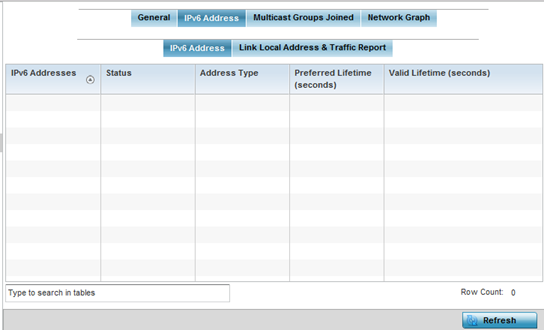| Transmit
Errors |
Displays the number of IPv6
formatted data packets with errors transmitted on the
interface. |
| Transmit
Aborted Errors |
Displays the number of IPv6
formatted packets aborted on the interface because a
clear-to-send request was not detected. |
| Transmit
Carrier Errors |
Displays the number of IPv6
formatted carrier errors on the interface. This
generally indicates bad Ethernet hardware or bad
cabling. |
| Transmit FIFO
Errors |
Displays the number of IPv6
formatted FIFO errors transmitted at the interface.
First-in First-Out queueing is an algorithm that
involves the buffering and forwarding of packets in the
order of arrival. FIFO uses no priority. There is only
one queue, and all packets are treated equally. An
increase in the number of FIFO errors indicates a
probable hardware malfunction. |
| Transmit
Heartbeat Errors |
Displays the number of IPv6
formatted heartbeat errors. This generally indicates a
software crash, or packets stuck in an endless
loop. |
| Transmit
Window Errors |
Displays the number of IPv6
formatted window errors transmitted. TCP uses a sliding
window flow control protocol. In each TCP segment, the
receiver specifies the amount of additional received
data (in bytes) the receiver is willing to buffer for
the connection. The sending host can send only up to
that amount. If the sending host transmits more data
before receiving an acknowledgment, it constitutes a
window error. |
